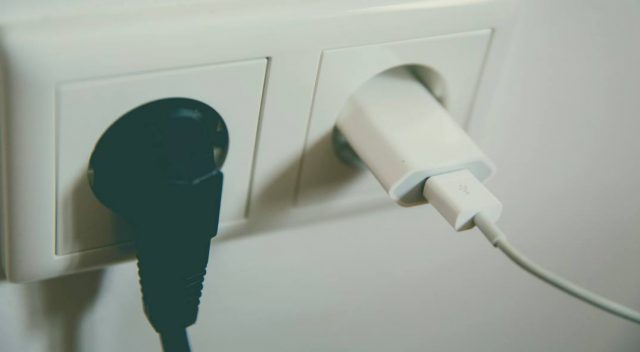Advantages in Achieving Sustainable Weight Loss through Semaglutide
Semaglutide is an injectable medication that has gained attention for its effectiveness in weight loss. By activating GLP-1 receptors, semaglutide increases feelings of fullness, reduces appetite, and slows down gastric emptying. This leads to decreased food intake and ultimately helps individuals lose weight. Semaglutide is typically administered once weekly via subcutaneous injection. Sustainable weight loss requires ongoing commitment to these lifestyle changes in addition to the medication.
Administration Methods of Semaglutide
- Dosage: The recommended dose for weight reduction is 2.4 milligrams (mg) of semaglutide, once a week.
- Injection Route: Semaglutide is administered through a subcutaneous injection, which involves injecting it just below the skin surface. The typical injection sites include the abdomen, thigh, or upper arm.
- Frequency: The injections are given once a week, on the same day each week. Consistency in administering the medication is essential for optimal results.
- Healthcare Provider Guidance: Semaglutide for weight reduction should be prescribed and monitored by healthcare professionals experienced in its use. They will guide patients on the proper technique for self-administering the injections and provide instructions for disposal of used needles.
- Proper Use: Ensuring proper use of semaglutide requires adhering to the instructions provided by your healthcare provider or following the guidelines outlined on the medication’s label. This includes storing the medication correctly, using sterile injection techniques, and adhering to the recommended dosage.
Effectiveness Aspects of Semaglutide
- Weight Loss: Semaglutide has shown significant effectiveness in promoting weight loss. Clinical trials have demonstrated that weekly doses of semaglutide, ranging from 1.7mg to 2.4mg, lead to substantial weight reductions in individuals with obesity or overweight. The weight reduction \ outcomes observed with semaglutide have been comparable to or greater than other medications used for weight management.
- Sustained Effects: Studies have indicated that semaglutide can lead to sustained weight reduction effects. In one study, treatment with semaglutide over a period of 68 weeks resulted in continued weight reduction. This suggests that semaglutide may provide long-term benefits in weight management.
- Comorbidity Improvement: The use of semaglutide for weight reduction has been associated with positive outcomes in obesity-related comorbidities like type 2 diabetes and cardiovascular risk factors. The reduction of 5-10% or more in body weight, attained with semaglutide, has been associated with positive changes in these comorbidities.
- Blood Sugar Control: By stimulating insulin secretion and reducing glucagon levels, semaglutide has proven to be effective in enhancing blood sugar control for individuals diagnosed with type 2 diabetes, ultimately leading to improved glycemic control. This effect is valuable for individuals with diabetes who are also seeking weight management.
- Overall Metabolic Benefits: In addition to weight reduction and glycemic control, semaglutide has shown potential metabolic benefits. It has been associated with reduced waist circumference, improved lipid profiles (including decreased triglycerides and increased HDL cholesterol), and lowered blood pressure. These effects contribute to an overall improvement in metabolic health.
- Potential Psychological Benefits: Some studies suggest that semaglutide may have positive effects on psychological well-being and quality of life. Weight reduction achieved through semaglutide treatment has been associated with improvements in self-esteem, body image, and mood. These psychological benefits further contribute to the effectiveness of semaglutide in weight management.
Emerging Applications in Weight Management
- Chronic Weight Management: A once-weekly injection of semaglutide, given subcutaneously at a dosage of 2.4 mg, has received FDA approval as a treatment for long-term weight management. This indicates its potential as a long-term treatment option for individuals struggling with obesity.
- Clinical Effectiveness: Studies have shown that semaglutide is clinically effective for weight reduction in people with overweight. The findings suggest that semaglutide can lead to significant weight reduction at 3 and 6 months, highlighting its potential as a therapeutic agent.
- Behavioral Intervention: In conjunction with behavioral intervention, once-weekly subcutaneous semaglutide has shown positive effects on weight management in adults with overweight. Semaglutide has been found to yield more significant weight loss when combined with lifestyle modifications compared to other interventions such as liraglutide. This indicates that semaglutide, alongside diet and exercise programs, can be effective in achieving better outcomes for weight management.
- Adjunct to Lifestyle Intervention: Research has investigated the use of once-weekly semaglutide at a dosage of 2.4 mg in combination with lifestyle intervention for adults with obesity. The results indicate that it can contribute to weight reduction when combined with lifestyle changes.
- Superiority to Other Medications: The medication Mounjaro, which contains semaglutide, has been found to lead to more and faster weight reduction compared to Ozempic, another obesity drug. This suggests that semaglutide-based treatments may offer advantages over existing medications.
- GLP-1 Receptor Agonist: Semaglutide is classified as a GLP-1 receptor agonist, a type of medication that has been authorized for weight management purposes. This highlights semaglutide’s potential as a treatment option for individuals with overweight or obesity.
- Game-Changing Potential: Semaglutide, already approved as a treatment for Type 2 diabetes, has the potential to be a game-changing weight reduction drug. Its effectiveness, safety, and tolerability make it a promising option for individuals seeking significant weight reduction.
These emerging applications in weight management suggest that semaglutide has potential as a long-term treatment option for chronic weight management, can be effective when used in conjunction with lifestyle interventions, and may offer advantages over existing medications.
Potential Advancements
1. Weight Reduction Outcomes: Studies have shown that weekly doses of semaglutide, ranging from 1.7mg to 2.4mg, were associated with significant weight reduction. These doses were found to be effective in promoting weight reduction comparable to other medications.
2. Long-Term Effects: Research indicates that treatment with semaglutide over a period of 68 weeks resulted in substantial weight loss. The study suggests that semaglutide, particularly at a dosage of 2.4mg, can lead to significant and sustained weight reductions.
3. Value in Obesity Treatment: Semaglutide injections have demonstrated effectiveness in weight reduction and underscore the importance of treating obesity as a chronic metabolic condition. The ongoing research continues to support the potential of semaglutide as a valuable treatment option.
4. Combination Therapies: Researchers are exploring the potential of combining semaglutide with other drugs to enhance weight loss outcomes. Experimental drugs that target both GLP-1 and GIP pathways, in addition to semaglutide’s GLP-1 effect, aim to further improve weight reduction results.
5. Prevention and Treatment: High-dose semaglutide (2.4mg/weekly) shows promise in preventing and treating diabetes and cardiovascular conditions in addition to promoting weight reduction. This indicates its potential as a game-changing treatment option.
6. Reshaping the Future: Semaglutide has been recognized as a breakthrough weight reduction drug with the potential to reshape the future of weight reduction treatments. Its effectiveness and potential advancements make it an exciting prospect in the field.
7. Greater Weight Loss Benefits: An experimental drug, which includes semaglutide, has shown potential for providing greater weight reduction benefits compared to existing drugs on the market. This highlights the continuous efforts to push the boundaries of weight loss treatments.














